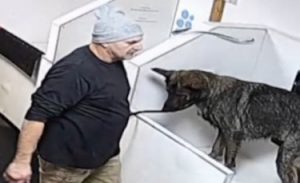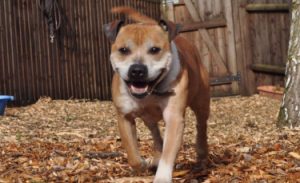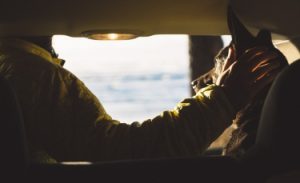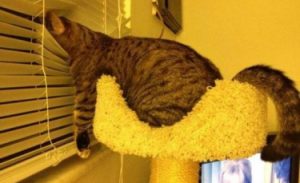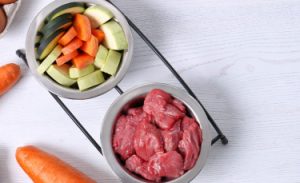Other names: Shikoku Ken, Kochi Ken
The Shikoku is a medium-sized dog, typically primitive and Japanese, of harmonious and balanced build, with well-developed musculature, pointed ears and a curled tail. Its framework is compact, but without the impression of heaviness. The gait of the Shikoku is characterized by firm, light and rapid movements.
<!–
–>
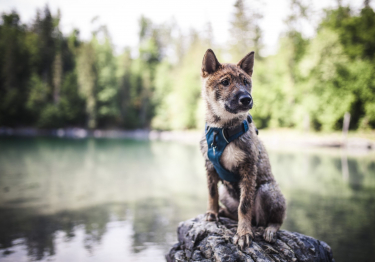
| Half-long | |
| Japan | |
| Average | |
| Triangular |
| Sex | Weight | Cut |
|---|---|---|
| Female | From 16 kg to 19 kg | From 44 cm to 49 cm |
| Male | From 20 kg to 26 kg | From 50 cm to 55 cm |
History of the breed
the Shikoku descends from the medium sized dogs that existed in ancient Japan . He was bred as a hunting dog , especially for wild boar in the mountainous areas of Kochi Prefecture. There were 3 varieties called Awa, Hongawa and Hata (these are the names of their regions of origin). Today, it is the characteristics inherited from Hongawa that prevail in the current Shikoku. The breed is so important in its country that it was registered as part of the national heritage in 1937.
The Shikoku breed was definitively recognized by the FCI (Fédération Cynologique Internationale) on February 1, 1982. Its official FCI standard in force was published on October 30, 2016.
Physical features
His hair: hard in texture and straight. The outer coat is associated with a softer and very dense undercoat. The hair is longer on the tail. The top coat / undercoat set gives the dog good protection against cold and bad weather.
Its color: sesame (mixture of black, red and white hairs), red, black or light brown.
Its head: triangular in shape, in harmony with the rest of the body by its shape and dimensions. The forehead is broad, the stop well defined, the nose black, the muzzle long and in the form of a wedge, the lips tightly closed, the teeth strong and articulated in scissors and the cheeks well developed.
His ears: triangular, small, erect or slightly tilted forward, ending in a point
His eyes: almost triangular in shape, not too small and dark brown in color.
His body: well proportioned as a whole. The neck is thick and powerful, the withers high and well developed, the back straight and strong, the loins broad and muscular, the chest deep, the ribs well sprung and the belly slightly raised.
Its tail: set high, thick, carried above the back and well rolled up.
Behavior and character
| Affectionate | |
|---|---|
| Calm | |
| Protective | |
| Independent | |
| Hunter | |
| Barks / howls |
Behavior with others
| Cohabitation with children | |
|---|---|
| Sociable with other animals | |
| Love strangers |
the Shikoku is a dog with a balanced temperament , but who can tend to display dominant behavior, especially in males. Independent, he is suspicious of strangers and particularly alert. He is relatively docile compared to most primitive type dogs. When hunting, the Shikoku shows determination, enthusiasm and endurance . It is also distinguished by its liveliness and energy .
The Shikoku
is it right for you? Take the test!
Education
| Clever | |
|---|---|
| Obedient |
Socialization of Shikoku is very important . It must start as quickly as possible and include as many species as possible so that the dog learns to interact with its environment in the best conditions. Learning the ground rules such as recall is just as essential. The education of Shikoku requires a balanced mix of firmness and softness , however excluding any form of brutality.
Living conditions
| Suitable for apartment living | |
|---|---|
| Good for new masters | |
| Love it hot | |
| Love the cold |
the Shikoku is aimed primarily at owners with a minimum of experience in the education and management of a primitive type dog. He is not really made to live in an apartment and will prefer to enjoy a large fenced garden .
Health
| Solid | |
|---|---|
| Ease of gaining weight |
the Shikoku is a rather robust and resistant dog. He enjoys solid health and tolerates cold and humidity quite well thanks to his double and densely furnished coat.
Hypoallergenic breed
No
Litter size
Between 4 and 6 puppies
| Major concerns |
|
||
| Minor concerns |
|
| Occasional concerns |
|
To protect yourself from these risks and insure your companion in the event of health problems, Woopets recommends Shikoku dog insurance .

function showAssuranceForm () {var siteReferer = var id_race_association = ‘255’; //console.log(id_race_association);success: function (html) {}});}document.addEventListener (‘DOMContentLoaded’, () => {$ (‘# assuranceModalBanner’). on (‘show.bs.modal’, function (event) {showAssuranceForm ();});});
Life expectancy
Minimum: 10 years
Maximum: 12 years
The life expectancy of a Shikoku is, on average, between 10 years and 12 years.
Calculate the human age of your Shikoku!
To choose… 1 year 2 years 3 years Four years 5 years 6 years 7 years 8 years 9 years 10 years 11 years old 12 years 13 years 14 years old 15 years old 16 years old 17 years 18 years old 19 years old 20 years 21 years old
Maintenance and hygiene
| Ease of maintenance | |
|---|---|
| Cost of maintenance | |
| Hair loss |
| Drool level | |
|---|---|
| Ease of grooming |
the Shikoku remains subject to 2 moults per year, usually occurring in spring and fall and resulting in significant hair loss. Apart from these periods which require frequent care, its maintenance does not present any particular constraints .
It is recommended to brush the dog regularly apart from the moults . During the latter, brushing becomes more frequent: at least daily, even twice daily in some dogs losing a lot of hair. The use of a Furminator type tool allows you to remove as much dead hair as possible.
His teeth need to be brushed frequently to remove tartar build-up and the proliferation of bacteria. If they do not wear out naturally, its claws need to be cut. If you are new to this, it is recommended that you seek advice from a veterinarian or groomer.
Price and budget
Purchase price
Mini
€ 1,500 Maxi
2000 €
The purchase price of a Shikoku is between 1500 € and 2000 €.
Annual maintenance cost
Mini
Max € 500
600 €
The annual maintenance cost of a Shikoku is between € 500 and € 600.
No name is currently proposed. Use our tool to find the name of your Shikoku!
Food
The Shikoku needs a balanced and quality diet , adapted to his level of physical activity, his age and his size. To prevent him from gaining significant weight, it is advisable to monitor his daily rations.
Want the best for your dog?
Create tailor-made food for your Shikoku
I discover !
PROMO -30% | Delivered to you!
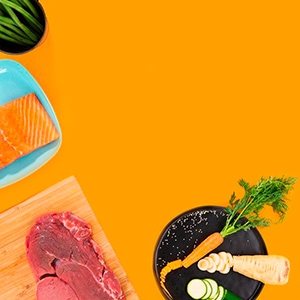
Physical activity
| Athletic | |
|---|---|
| Energy level | |
| Potential to play |
the Shikoku is a very active dog and therefore requires a lot of daily exercise : hour-long walks, games, etc. Otherwise, he may get bored and develop various behavioral problems.
Competitions
| Classifications & Standards |
|
Others
| Master character <span class="btnTooltip qTip2" title="- Calm: the master must be gentle and know how to show patience. – Active: the owner must be energetic and dynamic to live in harmony with his dog. – Hyperactive: the owner must be stimulating and very restless to suit the temperament of his dog.”> |
Active |
|---|
FCI Information
FCI No.
319
FCI Group
Group 5: Spitz-type and primitive-type dogs
Recognized by FCI
Since 1982
</div


